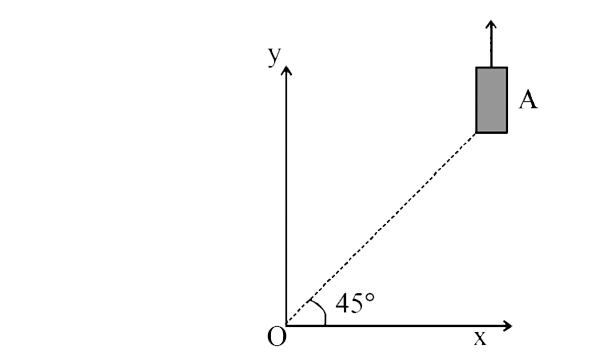∫secx√sin(2x+α)+sinαdx
The correct Answer is:√2secA(√tanxsinA+cosA)+C
To solve the integral I=∫secx√sin(2x)+sinαdx, we will follow a systematic approach.
1. Rewrite the Sine Function:
We know that sin(2x)=2sinxcosx. Thus, we can rewrite the integral as:
I=∫secx√2sinxcosx+sinαdx
2. Express Secant in Terms of Cosine:
Recall that secx=1cosx. Therefore, we can rewrite the integral:
I=∫1cosx√2sinxcosx+sinαdx
3. Factor Out Constants:
We notice that we can factor out sinα from the square root:
I=∫1√sinα⋅1cosx√2sinxcosxsinα+1dx
4. Substitution:
Let t=tanx, then dt=sec2xdx or dx=dtsec2x=dt1+t2. Also, sinx=t√1+t2 and cosx=1√1+t2. Substituting these into the integral gives:
I=∫1√sinα⋅11√1+t2√2t√1+t21√1+t2sinα+1⋅dt1+t2
5. Simplifying the Integral:
After simplification, we can express the integral in terms of t:
I=1√sinα∫1√2t+sinα(1+t2)sinα⋅dt1+t2
6. Final Integration:
This integral can be solved using standard integration techniques. The result will involve the substitution back to x and will yield:
I=√22√sinα√tanx+tanα+C
Final Answer:
I=√22√sinα√tanx+tanα+C
We know that sin(2x)=2sinxcosx. Thus, we can rewrite the integral as:
I=∫secx√2sinxcosx+sinαdx
Recall that secx=1cosx. Therefore, we can rewrite the integral:
I=∫1cosx√2sinxcosx+sinαdx
We notice that we can factor out sinα from the square root:
I=∫1√sinα⋅1cosx√2sinxcosxsinα+1dx
Let t=tanx, then dt=sec2xdx or dx=dtsec2x=dt1+t2. Also, sinx=t√1+t2 and cosx=1√1+t2. Substituting these into the integral gives:
I=∫1√sinα⋅11√1+t2√2t√1+t21√1+t2sinα+1⋅dt1+t2
After simplification, we can express the integral in terms of t:
I=1√sinα∫1√2t+sinα(1+t2)sinα⋅dt1+t2
This integral can be solved using standard integration techniques. The result will involve the substitution back to x and will yield:
I=√22√sinα√tanx+tanα+C
I=√22√sinα√tanx+tanα+C
Topper's Solved these Questions
- INDEFINITE INTEGRAL BOOK - ARIHANT MATHS ENGLISHCHAPTER - INDEFINITE INTEGRAL EXERCISE - Exercise (Single Option Correct Type Questions)
20 Videos
- INDEFINITE INTEGRAL BOOK - ARIHANT MATHS ENGLISHCHAPTER - INDEFINITE INTEGRAL EXERCISE - Exercise (More Than One Correct Option Type Questions)
5 Videos
- INDEFINITE INTEGRAL BOOK - ARIHANT MATHS ENGLISHCHAPTER - INDEFINITE INTEGRAL EXERCISE - Exercise For Session 5
10 Videos
- HYPERBOLABOOK - ARIHANT MATHS ENGLISHCHAPTER - HYPERBOLAEXERCISE - Hyperbola Exercise 11 : Questions Asked in Previous 13 Years Exams
3 Videos
- INVERSE TRIGONOMETRIC FUNCTIONSBOOK - ARIHANT MATHS ENGLISHCHAPTER - INVERSE TRIGONOMETRIC FUNCTIONSEXERCISE - Exercise (Questions Asked In Previous 13 Years Exam)
8 Videos
Similar Questions
∫√sin(x−α)sin(x+α)dx
View Solution∫sin2xsin(x−α)sin(x+α)dx
View SolutionOn a frictionless horizontal surface , assumed to be the x−y plane , a small trolley A is moving along a straight line parallel to the y−axis ( see figure) with a constant velocity of (√3−1)m/s . At a particular instant , when the line OA makes an angle of 45(∘) with the x− axis , a ball is thrown along the surface from the origin O. Its velocity makes an angle ϕ with the x− axis and it hits the trolley .
(a) The motion of the ball is observed from the frame of the trolley . Calculate the angle θ made by the velocity vector of the ball with the x−axis in this frame .
(b) Find the speed of the ball with respect to the surface , if ϕ=(4θ)/(3).

View Solution∫√1+sin(x2)dx
View Solution∫√1+sin(x2)dx=
View Solution∫dx√1+sinx
View SolutionEvaluate: (i) ∫sin(x−a)sin(x−b) dx (ii) ∫sin(x−α)sin(x+α) dx
View SolutionEvaluate: ∫sin(x−α)sin(x+α) dx
View Solution∫1√sin3xsin(x+α)dx is equal to
View Solution∫dxsin(x−α)sin(x−β)
View Solution
